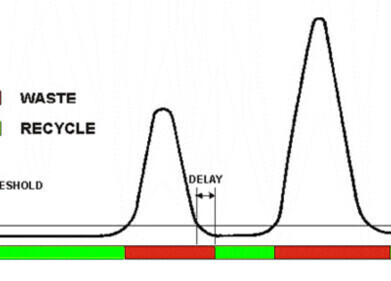-
 Scientists investigate the effect of fluid loading on shock
Scientists investigate the effect of fluid loading on shock
HPLC, UHPLC
HPLC used in shock study
Sep 21 2011
In a study published in Critical Care, the scientists behind the investigation explained that caspofungin treatment is frequently initiated in hypovolemic shock patients, with this study on pigs seeking to provide insight into the effects of fluid loading.
A dozen pigs were bled following anaesthesia and mechanical ventilation to introduce a two-hour deep shock and resuscitated using normal saline based on hemodynamic goals, while 16 animals were used as controls.
Using HPLC, the scientists discovered that extravascular lung water index was higher in the shock group, while maximal plasma concentration was 37 per cent lower than the control group, however plasma to tissue ratios were not different.
"Hypovolemic shock followed by fluid loading in pig results in a significant increase in the apparent volume of distribution of caspofungin and in a decrease in its plasma and pulmonary exposition," the report concluded.
It added that while the results were for capillary leakage and pulmonary edema, the same results would hold true for septic shock.
Digital Edition
Chromatography Today - Buyers' Guide 2022
October 2023
In This Edition Modern & Practical Applications - Accelerating ADC Development with Mass Spectrometry - Implementing High-Resolution Ion Mobility into Peptide Mapping Workflows Chromatogr...
View all digital editions
Events
May 05 2024 Seville, Spain
May 15 2024 Birmingham, UK
May 19 2024 Brno, Czech Republic
May 21 2024 Lagos, Nigeria
May 23 2024 Beijing, China













